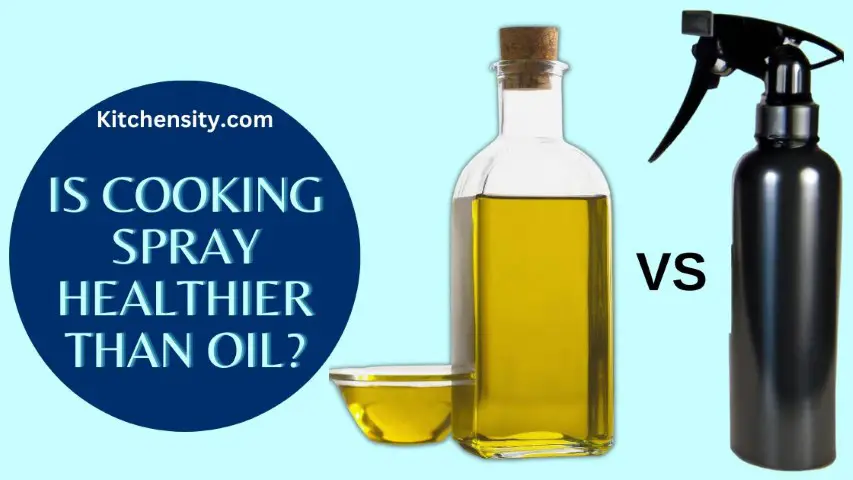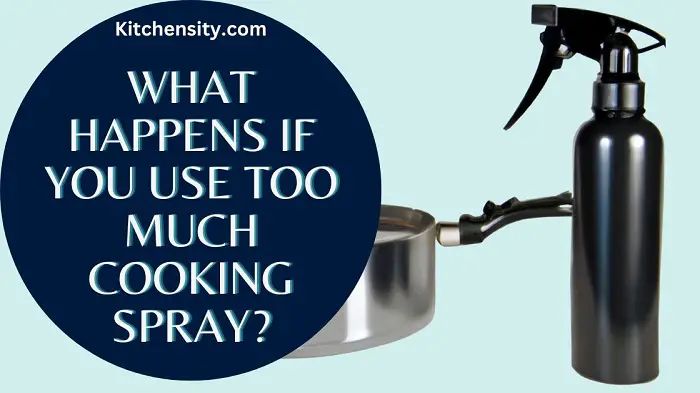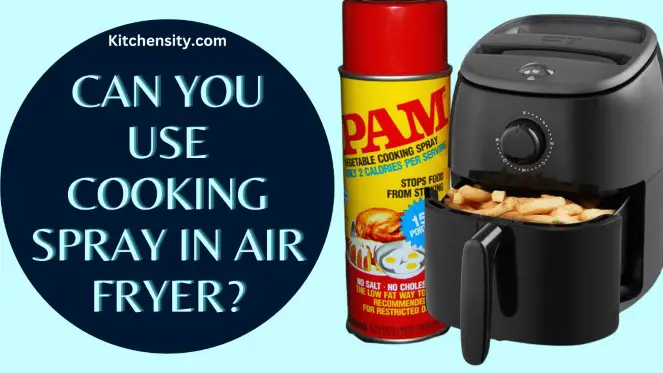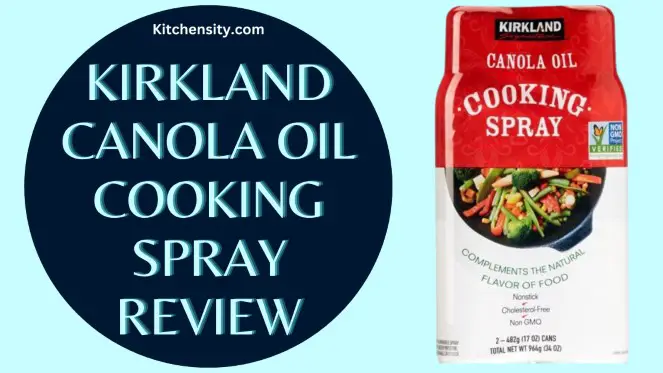When it comes to cooking, using the right oil is crucial for achieving delicious and healthy results. While traditional cooking oils like olive, canola, and vegetable oils have long been go-to options, non-aerosol cooking spray is quickly gaining popularity as a healthier and more convenient alternative.
Impact-Site-Verification: dca86ade-e9eb-43bd-97ec-e90804d921d4
But what exactly is a non-aerosol cooking spray, and how does it compare to other cooking oils?
In this article, we’ll cover its benefits and uses, and help you determine whether it’s the right choice for you.
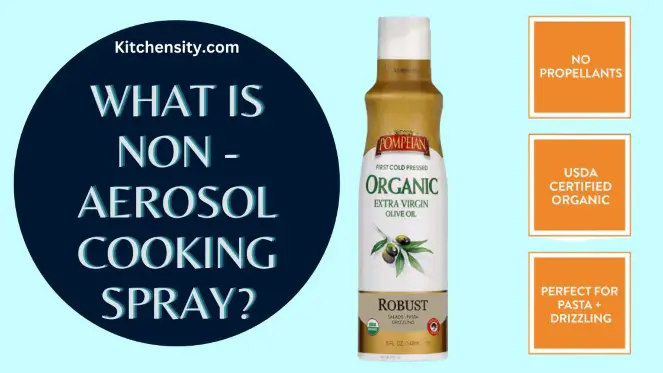
Table of Contents
What is Non-Aerosol Cooking Spray?
Non-aerosol cooking spray is a type of cooking oil that is sprayed onto food using a pump or trigger mechanism, rather than a propellant like traditional aerosol cooking sprays.
It typically contains a combination of oils, such as canola, sunflower, or soybean oil, along with other ingredients like lecithin (a natural emulsifier), water, and flavorings.
How Does Propellant-Free Cooking Spray Work?
Non-aerosol sprays, also known as propellant-free sprays, use a different mechanism than traditional aerosol sprays to dispense their contents.
Instead of relying on a propellant gas to force the product out of the can, non-aerosol sprays use a manual pump or a bag-and-valve system to release the contents.
- Manual pump sprays have a small pump mechanism attached to the spray nozzle. When the user presses down on the nozzle, the pump draws in air and then expels it through the nozzle along with the product, creating a fine mist. This mechanism requires the user to physically pump the nozzle to dispense the spray, but it allows for more control over the amount and direction of the spray.
- Bag-and-valve systems, on the other hand, use a bag made of flexible plastic material that contains the product. The bag is surrounded by a rigid outer container, and a valve at the bottom of the container releases the product when pressed. As the valve is pressed, it compresses the bag, forcing the product out through the nozzle in a fine mist.
Benefits of Non-Aerosol Cooking Spray:
- Healthier than traditional cooking oils: Non-aerosol cooking spray allows you to use less oil overall, which can help reduce your intake of unhealthy fats and calories.
- Convenient and mess-free: Unlike pouring oil from a bottle, it allows you to control the amount of fat you use and apply it evenly and precisely, without making a mess.
- Versatile: It can be used for various cooking methods, including sautéing, grilling, and baking.
- Longer shelf life: Because non-aerosol cooking spray doesn’t contain propellants, it typically has a longer shelf life than traditional aerosol sprays.
How to Use Non-Aerosol Cooking Spray?
Using a non-aerosol cooking spray is easy! Here’s how:
- Shake the canister well before use.
- Hold the canister about 6 inches away from the food.
- Spray a light and even coating of oil onto the surface of the food.
- Use your hands or a brush to distribute the oil evenly, if necessary.
- Store the canister in a cool, dry place away from heat and direct sunlight.
Aerosol Vs Non-Aerosol Cooking Spray
Both aerosol and non-aerosol cooking sprays have their pros and cons.
While aerosol spray is more convenient to use, non-aerosol spray is generally considered to be healthier and more eco-friendly.
When choosing a cooking spray, it’s essential to read the ingredients list and choose a spray that’s free of harmful additives.
Here’s a table comparing aerosol and non-aerosol cooking spray:
| Factor | Aerosol Cooking Spray | Non-Aerosol Cooking Spray |
|---|---|---|
| Health | Contains harmful chemicals like propellants and other additives. | It is considered healthier than aerosol spray because it doesn’t contain harmful chemicals like propellants and other additives. |
| Convenience | More convenient to use because it requires less effort than non-aerosol spray. | Requires you to manually pump the oil out, which can be more time-consuming and require more effort. |
| Cost | Typically less expensive than non-aerosol spray. | Can be more expensive than an aerosol spray, but it’s often reusable, which can save you money in the long run. |
You May Also Like
- Can You Use Cooking Spray On A Cast Iron Skillet?
- Does Pam Cooking Spray Contain Butane?
- What Happens If You Use Too Much Cooking Spray?
- Is Cooking Spray Healthier Than Oil?
- What Pans Can You Use Cooking Spray On?
Final Verdict
Non-aerosol cooking spray is a convenient, mess-free, and healthier alternative to traditional cooking oils. By using it in your kitchen, you can reduce your intake of unhealthy fats and calories, and achieve more precise and even results.
Whether you’re sautéing, grilling, or baking, non-aerosol cooking spray is a versatile and easy-to-use option that’s worth considering for all your cooking needs.
It’s important to note that while non-aerosol cooking sprays may be a healthier alternative to traditional cooking oils, they still contain fat and calories. Using too much of any kind of cooking spray can lead to weight gain and other health problems. To avoid this, it’s best to use cooking spray sparingly and in moderation.
FAQs
-
Is Non-Aerosol Cooking Spray Healthier Than Traditional Cooking Oils?
Yes, non-aerosol cooking spray allows you to use less oil overall, which can help reduce your intake of unhealthy fats and calories.
-
Can Non-Aerosol Cooking Spray Be Used For Baking?
Yes, it can be used for various cooking methods, including baking.
-
Is Non-Aerosol Cooking Spray More Expensive Than Traditional Cooking Oils?
Non-aerosol cooking spray may be slightly more expensive than traditional cooking oils, but it typically lasts longer and can be used more efficiently, so you may end up saving money in the long run.
Katrina Smith is a seasoned expert with over 25 years of experience in all things related to cooking and the kitchen. As an avid cook and kitchen enthusiast, she is passionate about sharing her knowledge and expertise on cookware, kitchen appliances, kitchen tips, and kitchen staples.
Through her articles and reviews, Katrina aims to inspire and help others improve their cooking skills, experiment with different ingredients, and invest in quality cookware and appliances.

